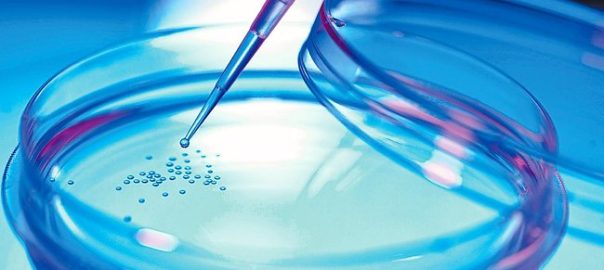The Difference Between Stem Cells and Growth Factors

Stem cells and growth factors are both trending words right now within the medical community, especially as certain treatments become widely available for patients to utilize for a multitude of purposes. It can be complicated to understand the difference between the two when it seems like they achieve the same outcome, but stem cells and growth factors do indeed offer certain benefits in the realm of regenerative medicine. The following cheat sheet will help you understand their differences.
The Basics of Stem Cells
Stem cells can be considered “mother cells” because they can ultimately transform into any type of cell in the body and multiply indefinitely in order to self-renew. This means that stem cells can eventually become blood, bone, muscle, brain, heart, skin, and many other types of cells. Since all other cells in the body develop for one specific purpose, these characteristics make stem cells very unique and exceptionally valuable.
Medical experts are able to obtain stem cells from various sources, including tissues of a developing human embryo, human fat, umbilical cord blood, adult bone and brain marrow, and human skin cells. Stem cells from specific origins often work best in certain applications, which is why bone marrow stem cells have been widely used in transplants for years.
When stem cells are utilized in stem cell therapies, both in humans and animals, they replace damaged, diseased, and defective cells. Upon injection the stem cells are guided by the damaged tissues that send inflammatory signals, and when they reach the location of the injury the stem cells begin self-renewing in order to heal the targeted location. This means that rather than simply providing temporary pain relief, stem cells actually restore degenerated tissue and significantly reduce pain.
The Basics of Growth Factors
Growth factors, on the other hand, are actually produced by stem cells themselves, as well as from platelets in the blood stream. The growth factors that originate from stem cells are released when the stem cells reach their final destination, whereas stem cells in blood platelets need to be obtained by placing the blood in a centrifuge and then injecting that platelet-rich plasma (PRP) back into the body. It has been discovered that the growth factors gathered from blood in a centrifuge are actually more potent than the growth factors released from stem cells in the body.
It is for this reason that most growth factor therapies deal with PRP, particularly skincare procedures and orthopedic treatments. When PRP growth factors are injected into the injured area, they help the body accelerate its natural healing process. The ultimate goals of using PRP include to reduce pain, eliminate the need for surgery, rejuvenate damaged and aging skin, and create long-lasting healing.
Overall, both of these regenerative medicine therapies have been used with stunning success, and hold critically important places in the future of medicine.


